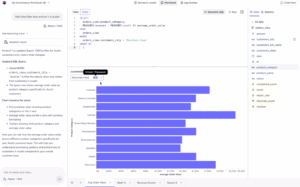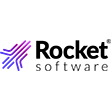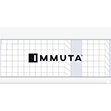
Cube Ready to Become the Standard for Universal Semantic Layer, If Needed

(atdigit/Shutterstock)
Artyom Keydunov created the Cube semantic layer as a side project back in 2018 to ensure consistent answers to queries generated by the new Slack chatbot he had built. Fast forward seven eventful years, and semantic layers have emerged as a critical element in the agentic AI stack. If the market demands an open standard for the semantic layer, Cube is ready to provide it, Keydunov said.
The natural language tech that Keydunov used for that early Slack chatbot was nothing compared to what ChatGPT and other large language models can do. “It was basic–not as good as what we have today,” the Cube CEO and co-founder told BigDATAwire. “But then I quickly realized I would need to build my own semantic layer so this simple AI can work.”
The Cube semantic layer–which allows users to establish common metrics for their data and helps to ensure consistent answers for SQL queries–quickly took off among the burgeoning Slack community. That early success for Cube led Keydunov to establish a company around the open source semantic layer in 2020.
Cube adoption continued to grow steadily in 2020 and 2021, largely centered on ensuring that the data presented in traditional BI dashboards is governed and accurate. Most BI tools have their own semantic layers, but the advantage of having an independent layer is knowing you will get consistent answers even when using multiple front-end BI tools and multiple data warehouse backends.
When OpenAI released ChatGPT in late 2022, it drove an explosion of interest in the semantic layer. Suddenly, the game had shifted, and Cube found itself smack dab in the middle of something big.
“I didn’t expect that,” Keydunov admitted. “It’s an interesting twist to the plot. But it also created a unique once-in-a-lifetime opportunity for our company, because everyone started talking about the semantic layer that you needed for AI, that you need this shared medium between humans and AI to be able to understand metrics and talk about the metrics and be on the same page between machines and humans. So definitely it was unexpected, but we got very lucky that it happened.”
Cube has been adopted by tens of thousands of organizations, ranging from small tech startups to the biggest tech companies and retailers in the world, Keydunov said. Many of these organizations are using Cube to ensure that SQL queries generated by chatbots and agentic AI solutions have access to consistent, governed data.
Cube expanded its product breadth considerably in June with the launch of Cube D3. The new agentic analytics offering, which isn’t part of the open source Cube project, essentially is a front-end BI tool that allows customers to leverage the power of AI to build dashboards. Cube never wanted to be in the market for front-end BI tools, but the trajectory of AI BI, or agentic analytics, is too great to pass up.
“It’s a really unique opportunity for us to couple AI with the semantic layer and create a fully new BI experience reimagined,” Keydunov said. “So our agentic analytics is essentially a BI product, built from scratch to be AI-first and fully based on our semantic layer.”
The D3 GUI has all the features you’d expect from a regular BI tool, he said. The big difference is that the BI content can be fully created and maintained by AI with humans in the loop. This is how BI overcomes the perpetual shortage of data analyst experts and ultimately democratizes BI.
“What is happening right now is AI is changing how we work, every job role and function,” Keydunov said. “I think we’ll have millions of dashboards in the next year or so in a single organization, because it’s just so easy now to build dashboards with AI. But then how do you ensure these millions of dashboards are corrected and well-governed if they’re created by AI? That’s why you need a sematic layer more than ever. That’s a trusted proxy.”
We’re still in the early days of semantic layer becoming an established member of the emerging AI stack. Databricks and Snowflake launched their own semantic layers two months ago. Snowflake’s semantic views and Databricks Unity Catalog metric views are both in beta, and expected to be generally available soon.
The Snowflake and Databricks moves demonstrate the critical importance of having consistent and governed data. If AI is going to touch every workflow and every industry as advertised, it’s going to need well managed, high quality data to act upon. A semantic layers can ensure that all the entities querying a given dataset–or even multiple data sets–are all on the some page.
The question then becomes: Does the market need an open standard for the semantic layer? Keydunov is not sure the market is ready to make that decision yet.
“Everyone makes their product in a unique way. There’s a lot of details; the devil in the details. If you adopt the open spec, what would it look like?”
Keydunov said he has talked with other semantic layer developers to see if there’s a way to create a single specification. At this point in time, with so many different approaches being tried, it would seem that a standard spec is not particularly close.
“While I think there’s a desire to do that, I don’t think it’s something that’s urgent or pressing,” he said. “Hopefully once the agentic AI BI market matures, we’ll get to the point where we’ll have a commercial spec.”
If a standard is needed, then Keydunov wouldn’t be opposed to Cube being the model for it. The open source project is already managed openly on GitHub. It has nearly 19,000 GitHub stars, nearly 13,000 Slack members, and about 350 individual contributors. It’s distributed under an Apache 2.0 license.
While other semantic layers provide some software as open source or source available, Cube is the only semantic layer that you can just download and run, Keydunov said.
“We do the whole runtime,” he said. “If you want to use the semantic layer in open source and just fully control it… you can just take the whole Cube project and run it however you want. You can modify it. You can do whatever you want with it. You don’t need to contact the Cube– commercial entity at all.”
Keydunov said he has considered contributing Cube to an open source foundation, such as the Apache Software Foundation or the Linux Foundation. “We could be open to that,” he said. “People contribute it to outside of their organizations, so it’s pretty open from [a true open source standpoint]. We never really set it as a goal to contribute it to Apache, but at the same time, why not?”
Related Items:
Beyond Words: Battle for Semantic Layer Supremacy Heats Up
Cube Secures $25M to Advance Its Semantic Layer Platform
Cube Deepens Semantic Hooks Into GCP, Holds First Conference





































